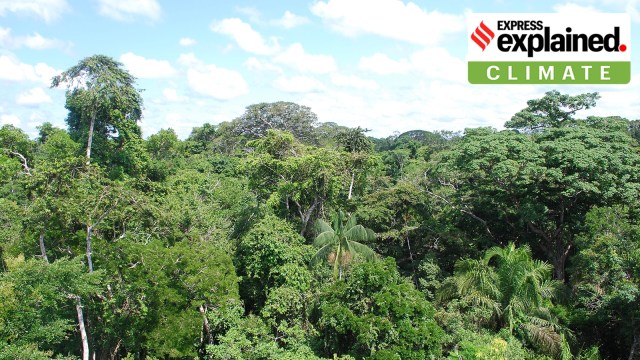40% Amazon rainforest unprotected: why is this significant for climate change?
Nearly 40% of the areas of the Amazon rainforest most critical to curbing climate change have not been granted special government protection, as either nature or indigenous reserves, according to an analysis by nonprofit Amazon Conservation.
 The Amazon rainforest is critical for the planet. (Image source: Wikimedia Commons)
The Amazon rainforest is critical for the planet. (Image source: Wikimedia Commons)Scientists agree that preserving the Amazon rainforest is critical to combating global warming, but new data published on Wednesday indicate huge swathes of the jungles that are vital to the world’s climate remain unprotected.
Nearly 40% of the areas of the Amazon rainforest most critical to curbing climate change have not been granted special government protection, as either nature or indigenous reserves, according to an analysis by nonprofit Amazon Conservation.
The areas lie in the far southwest of the Amazon in Peru and the far northeast in Brazil, French Guiana, and Suriname, the data show.
Those parts of the Amazon have the biggest, densest trees and the most continuous canopy cover, said Matt Finer, who leads Amazon Conservation’s Monitoring of the Andean Amazon Project (MAAP). That means these areas hold the most carbon, which would be released into the atmosphere as climate-warming greenhouse gas if the jungle is destroyed by fire or logging.
What satellite data show
Amazon Conservation analysed new data from the satellite imaging company Planet that used lasers to get a three dimensional picture of the forest and combined it with machine-learning models.
Only aboveground vegetation was considered, and not underground carbon in roots and soils.
MAAP’s analysis shows that 61% of the peak carbon areas in the Amazon are protected as indigenous reserves or other protected lands, but the rest generally has no official designation.
In Brazil, Suriname and French Guiana, only 51% of peak carbon areas are labeled for preservation. Peru protects a higher proportion of its critical areas, but some of the areas that have been left unprotected have been earmarked for logging.
Why the Amazon matters
MAAP published an analysis last month showing that the Amazon contained 71.5 billion tonnes of carbon, roughly double the global carbon dioxide emissions for 2022. That analysis showed that the Amazon just barely absorbed more carbon than it released in the decade leading up to 2022, a positive signal for the world’s climate.
But that remains an area of intense debate, with other studies showing the Amazon has flipped to become an emissions source.
As the effects of anthropogenic climate change become more stark with each passing day, the Amazon becomes one of the most valuable assets for the planet’s health. Scientists say that if the Amazon becomes an emission source instead of a carbon sink — which absorbs carbon from the atmosphere — the impact on the planet may be cataclysmic.
That is why the data published by Amazon Conservation are important. “It really just gives this overall roadmap in terms of some of the highest carbon areas that are important to protect,” Finer said. They really indicate the most pristine parts of the Amazon that still remain,” he said. Reuters
- 01
- 02
- 03
- 04
- 05






































